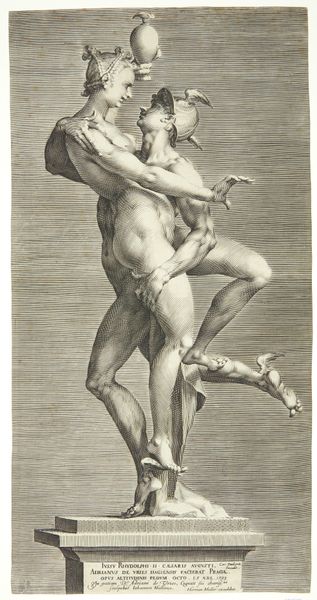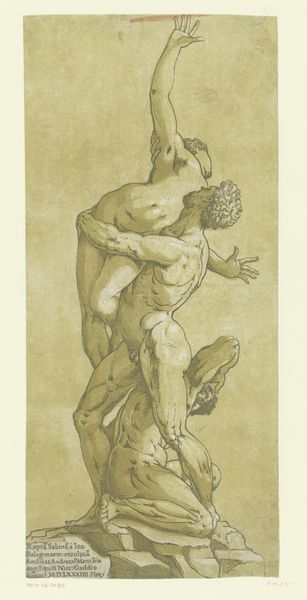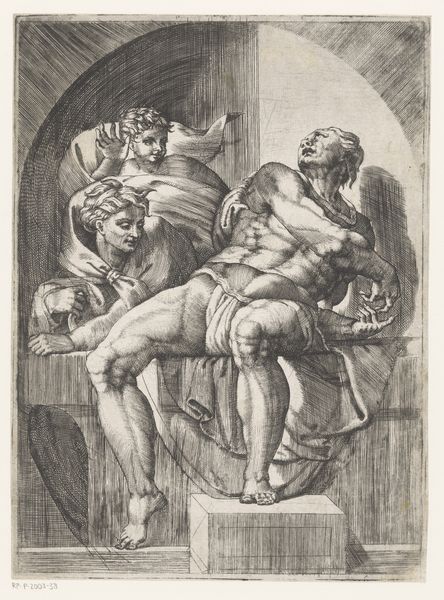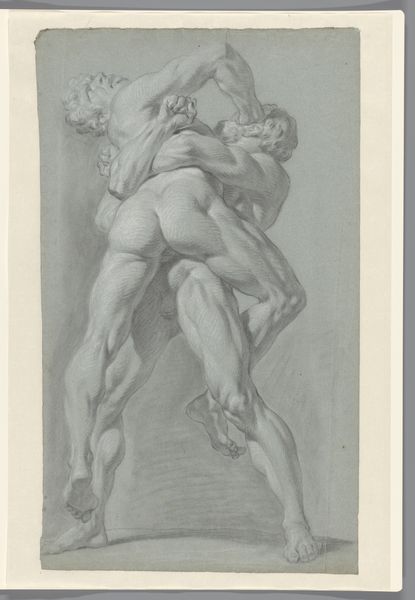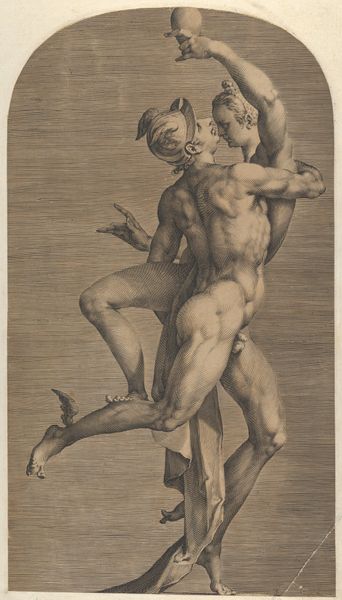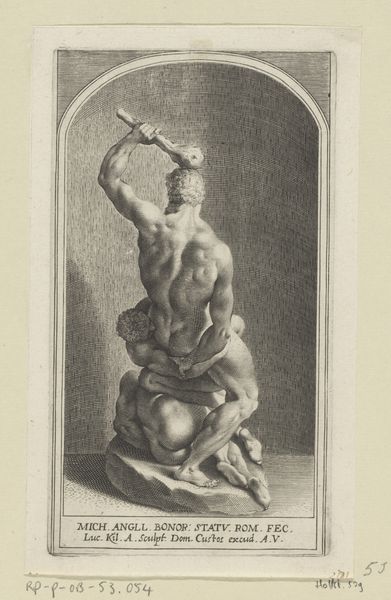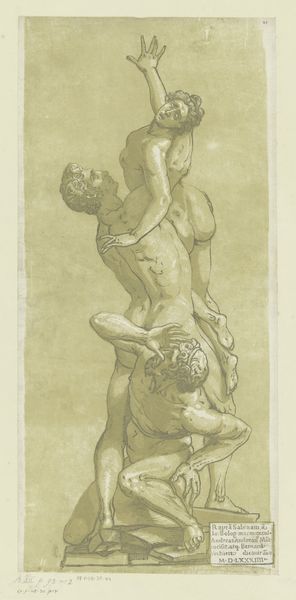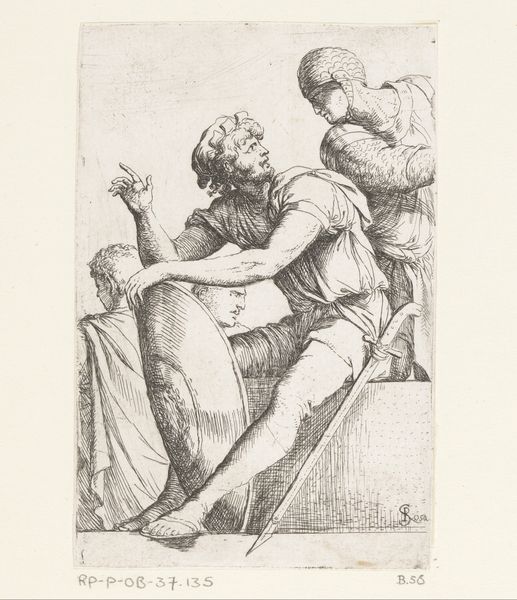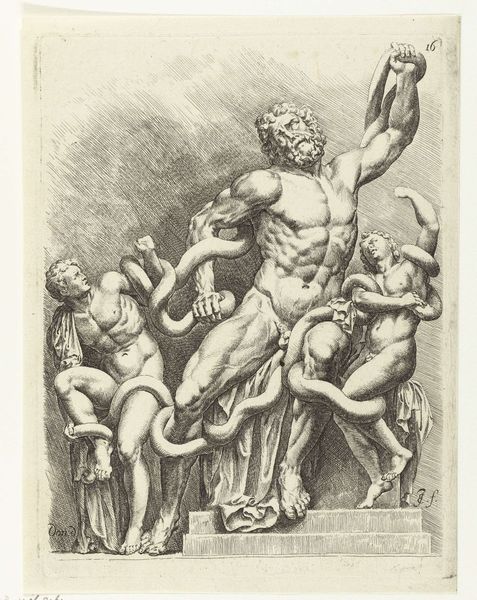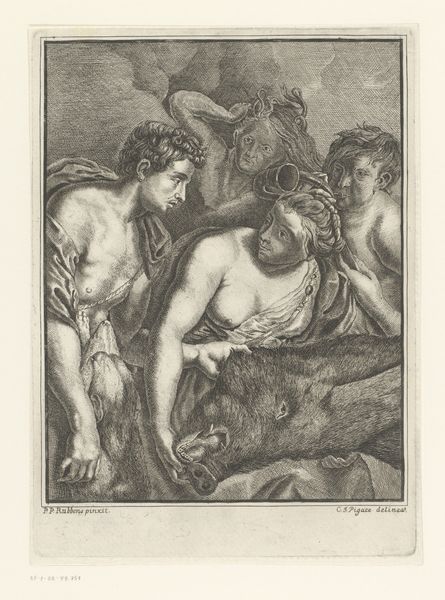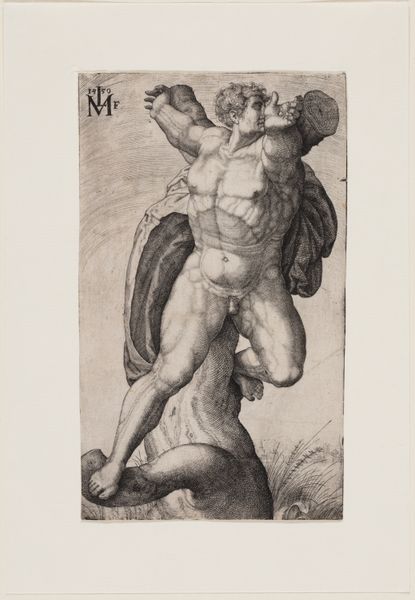
print, engraving
#
baroque
# print
#
old engraving style
#
figuration
#
line
#
history-painting
#
engraving
Dimensions: height 312 mm, width 201 mm
Copyright: Rijks Museum: Open Domain
Editor: Here we have Lucas Kilian’s "The Flagellation of Christ," a print from around 1650, showcased at the Rijksmuseum. The stark contrast in light and shadow really emphasizes the brutality of the scene. What catches your eye in this composition? Curator: The dominant interplay between vertical and horizontal lines certainly structures our reading of this piece. Consider the strong verticality of the pillar, contrasting with Christ’s bowed posture, a deliberate compositional choice. And then there is line itself. Do you observe the density of lines that model form and space? How do the variations in their weight contribute to a sense of depth and volume? Editor: Absolutely, it’s like the artist is using the lines to sculpt the figures on the page. The torturer almost bursts out, while Christ seems to recede through a greater economy of line. The light source is doing so much of the talking. Curator: Precisely. It directs our gaze. It's interesting how Kilian manipulates this single light source not only to illuminate but also to obscure, creating areas of visual intrigue. But consider the foreground too, seemingly undifferentiated from the midground through value. This pushes everything up against the picture plane, forcing us to engage with the surface qualities of the print. Editor: That's a great point! I was so caught up in the narrative, I almost missed how much the composition pushes everything forward. Thanks for making me notice the interplay between space and line. Curator: And I, in turn, value your reminder that a narrative does inhere. The success of any work relies not on one dimension alone.
Comments
No comments
Be the first to comment and join the conversation on the ultimate creative platform.
